The lacking third ninja recreation.
In anticipation and celebration of this 12 months’s launch of Ninja Gaiden 2 Black, Ninja Gaiden: Ragebound, Shinobi:Artwork of Vengeance, and Ninja Gaiden 4, Nintendojo takes a glance again on the historical past of this iconic style, the video games that outlined it, and the brand new titles becoming a member of the pantheon in our particular Yr of the Ninja sequence.
The 2 largest names in 2D ninja motion platformers are making their long-awaited returns this 12 months, with NINJA GAIDEN: Ragebound having launched on the finish of July and SHINOBI: Artwork of Vengeance coming on the finish of August. Shinobi had gone 14 years with out a new title, or 23 when you don’t depend the 3DS title made by (no offense to them) cellular recreation developer Griptonite. Should you exclude that and the 3D reboot on PS2, and also you set your watch by the final broadly acknowledged 2D Shinobi recreation, it’s truly been 32 years since Shinobi III. And when you exclude the Xbox trilogy and varied rereleases, it had been a equally miserable 34 years since Ninja Gaiden III: The Historical Ship of Doom.
The third largest identify in 2D ninja motion platformers is probably Capcom’s Strider, however it went ten years between the blockbuster Strider (1989) and its successor Strider 2 (1999), after which took one other 15-year break earlier than Double Helix made their entry in 2014 (confusingly additionally referred to as Strider). At this level the protagonist Strider Hiryu has truly been in additional non-Strider video games (e.g. Marvel vs Capcom) than Strider video games, and his MvC design is usually seen as his canonical take a look at this level.
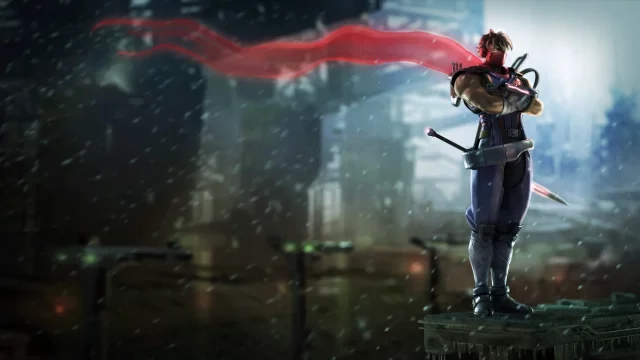
Whereas it’s a disgrace that Capcom isn’t becoming a member of in these “12 months of the ninja” celebrations with a brand new Strider recreation, we’re right here to not lament Strider Hiryu’s absence. Quite, let’s look again on the historical past of the Strider sequence and see what 2014’s Strider (the primary of those three sequence to get a comparatively excessive profile “trendy retro” sequel) can reveal in regards to the evolution of retro or arcade-inspired video games usually.
That is going to sound like a joke, however there are 5 Strider video games and their names are Strider, Strider, Strider II, Strider 2, and Strider. For the sake of readability and brevity the three Striders may also be referred to under as (1) Strider, (2) NES Strider, and (3) Strider 2014.
Capcom’s Kouishi Yotsui was accountable for the preliminary seed of the Strider idea, and after it was fleshed out collaboratively, Yotsui was put in command of growth of the arcade recreation. This arcade model would go on to be the idea of each console and residential laptop model besides one – the NES recreation is completely completely different. Whereas Yotsui’s workforce labored on the arcade model, different groups labored on each NES Strider and a six quantity manga. All three of those realizations of the Strider imaginative and prescient concerned a workforce of excessive tech ninja mercenaries (the Striders), starred a protagonist named Hiryu who was making an attempt to cease a world takeover, and used Kazakhstan (referred to as Kazakh consistent with its then-identity as a part of the USSR) as its major location.
Strider (NES)
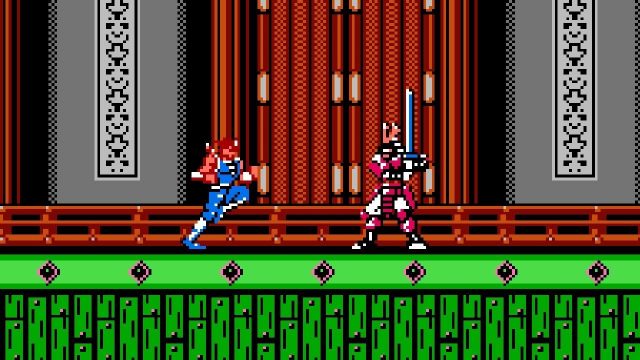
The manga and NES Strider ended up having very comparable tales, sharing an amazing many characters, the identical villains, the identical villainous plot, and most of the identical twists. After all, the manga tells the story in larger element and to larger impact, however the NES recreation is far more story-focused than was the norm on the time. Other than that, the NES recreation’s largest declare to fame within the sweep of sequence historical past is that it includes loads of backtracking and a few proto-Metroidvania parts, particularly in its Kazakh area, and is subsequently going to be one thing of an inspiration for Strider 2014’s construction.
Sadly, NES Strider is a really tough recreation to even conditionally suggest, because the controls are, frankly, lower than snuff for a Capcom title. It’s not that the controls aren’t consistent with trendy conceptions of high quality of life, or are merely demanding. It’s that they don’t reliably work. Hitboxes really feel very wonky on this recreation, particularly the place platforming is anxious, and Strider Hiryu’s signature “triangle leap” (which lets him climb up deep shafts) is difficult to efficiently execute even 1 / 4 of the time. Sadly, it could be Capcom’s worst recreation on the NES.
Strider (Arcade)
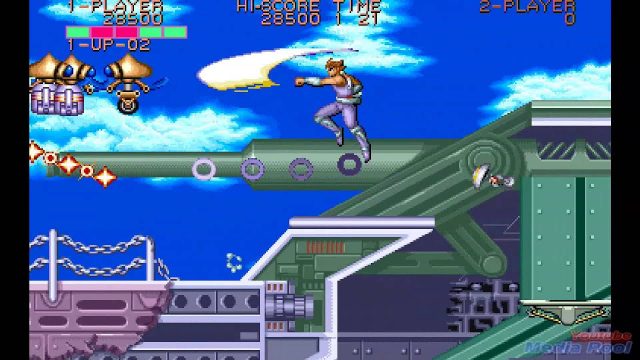
The arcade model of Strider is a really completely different recreation, clearly influenced by Capcom’s Ghosts n’ Goblins when it comes to exacting motion platforming, memorization-heavy gotcha traps, and a bottomless urge for food for the poor participant’s quarters. The place Strider differs from Ghosts n’ Goblins is in its degree of digital camera zoom and in its visible creativity. The sprites in Strider are a lot bigger than in Ghosts & Goblins, permitting for a way more visually arresting picture but in addition making it a lot more durable to see threats coming in time to react to them. It’s a trial and error form of recreation.
The visuals actually are spectacular, although, not only for the spritework however for his or her creativity. Strider one-ups the usual 80s “gritty neon cityscape with a aspect of ninjas” with a kitchen sink strategy, mixing 70s sci-fi, cyber ninjas, sky pirates, mecha-dinosaurs, common dinosaurs, Amazons, a Soviet-futurist cloud metropolis, and the Kazakh parliament human centipeding itself right into a dragon. In 1989 this will need to have been an absolute showstopper, and even in 2025 the standard of the imaginative and prescient shines via at the same time as the extent design frustrates. Whether or not a given participant is prone to get pleasure from Strider in toto hinges on whether or not the majesty of its creativity infatuates them lengthy sufficient to get previous the hump of studying all or a minimum of a lot of the recreation’s unintuitive gotchas.
Regardless, Strider stands out amongst its late 80s ninja contemporaries for not simply its flash however its acrobatics and its protagonist’s super-rapid sweeping sword strikes, and these have been key traits that may be carried ahead to its sequels and non secular successors. In contrast to the opposite video games mentioned on this article, Strider is playable on the Swap, through Capcom Arcade Stadium, and given how broadly it’s been ported it’s value attempting for anybody who’s learn this far.
Strider II (SEGA Genesis, Recreation Gear, & Grasp System)
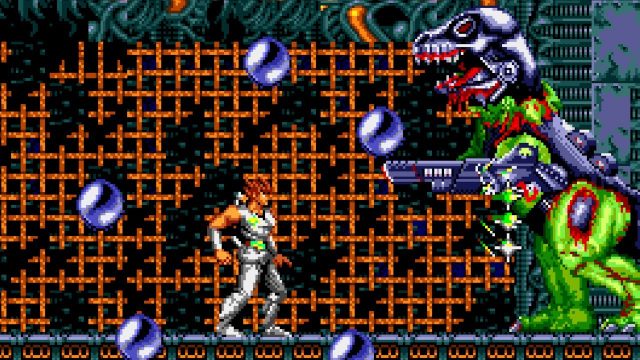
Strider II deserves a point out solely to clarify why it doesn’t benefit a point out. It was developed underneath the supervision not of Capcom however of U.S. Gold, the corporate overseeing a lot of the ports of Strider. U.S. Gold’s workforce sadly didn’t have Capcom’s degree design or recreation design acumen, and a participant who’s searching for extra motion within the mildew of Strider is best off taking a look at Kouichi Yotsui’s 1996 non secular successor, Cannon Dancer – Osman, which can also be out there on Swap.
Strider 2 (PlayStation & Arcade)
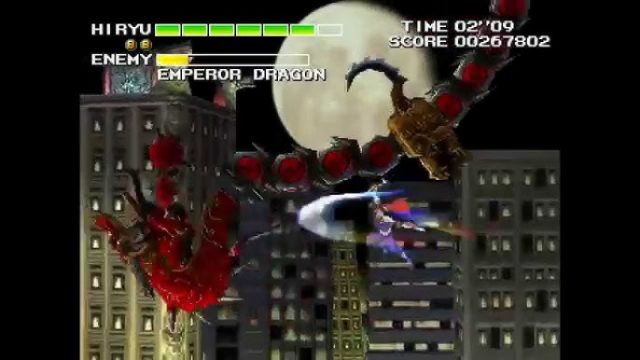
By the point Strider 2 was launched in 1999, the ninja motion platformer was, like seemingly each different 2D style, on life assist. They’d obtain a second life as handhelds bought stronger however not too robust (e.g. Ninja 5-O), and because the indie scene began to flourish (e.g. Oniken), however the late 90s have been fairly dry outdoors of Strider 2, which makes it considerably distinctive. It adopted the two.5D model frequent in PlayStation-era arcade style titles, with scaling sprites for the participant and enemies, and 3D fashions for the terrain.
Strider 2 ramps up the unique’s pace, acrobatics, and offensive flurries virtually to the breaking level. There are 5 phases, identical to within the authentic, however in Strider 2 they’re damaged into a lot of a lot shorter vignettes. The sport makes a number of modifications which assist the ninja fantasy of simply tearing via screens of enemies with out stopping. Hiryu now has a double leap to facilitate air restoration, he solely takes some injury if he falls right into a pit fairly than dying outright, and most significantly he not takes contact injury from enemies, solely their assaults. Naturally this additionally makes the sport simpler, and certainly Strider 2 places up a lot much less of a battle than the unique.
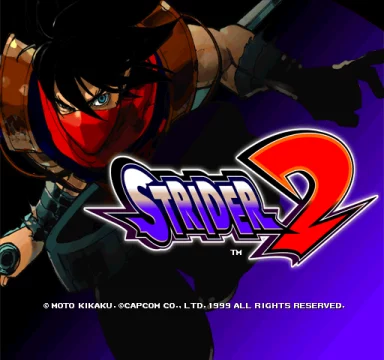
Strider 2 supplies rating play as its chief problem incentive. Getting excessive ranks in Strider 2 requires exacting play, however due to its kineticism it’s enjoyable even whenever you fail. And when you don’t care about something however survival, Strider 2 could be cathartic. The PlayStation port additionally permits you to unlock an alternate playable character, Strider Hien, on completion. Hien throws highly effective boomerangs as a substitute of swinging a sword, which actually makes the sport a bit simpler on common. However because the participant doesn’t have full management over the trajectory of these boomerangs, the Hien mode has its personal distinctive challenges too.
Aesthetically, Strider 2 is just not almost as a lot of a showstopper in 1999 phrases as Strider was in 1989 phrases, however anybody who has developed a style for well-done PlayStation polygon work will get pleasure from what’s on show. What’s extra disappointing is just not the technical strategy however the comparatively much less artistic surroundings right here as in comparison with Strider – not a single human centipede or mecha-dinosaur to be discovered, although the cyborg mammoth is appreciated. Regardless, the inter-stage artwork finished by Capcom’s Harumaru (who additionally did artwork for Avenue Fighter Alpha 3 and the Avenue Fighter 3 sequence) is attractive and trendy.
Strider 2 was unapologetically an arcade recreation ported to console in an period when reviewers not gave arcade design the respect it deserved. This was a recreation that took solely 30 or 40 minutes to “beat” and the participant might credit-spam their approach via. So from the perspective of the late 90s zeitgeist that thought extra hours and extra PlayStation discs meant a extra epic (and subsequently greater high quality) recreation, Strider 2 was doomed. And it bought dinged by reviewers for precisely the uncreative causes you’d anticipate. Whereas there are critical criticisms to lob on the recreation (e.g. its scoring system is a bit too lopsided within the path of avoiding all injury, and the final boss’s regenerating turrets are annoying), that’s not what we bought in print in 1999. As an alternative, the reception the sport obtained went a way towards explaining why Strider 2 was a final gasp of 90s arcade motion fairly than the vanguard of a renaissance.
Strider 2014 (PlayStation 3|4, Xbox 360|One, & Steam)
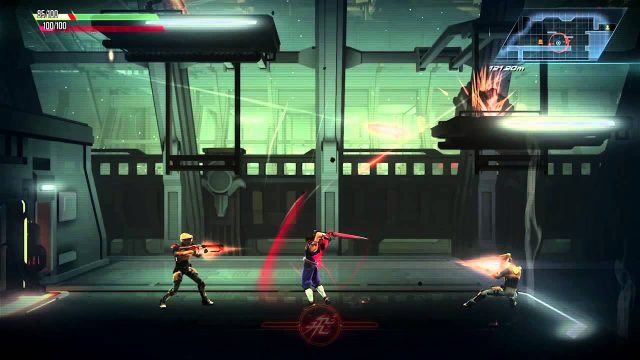
Strider 2014 was produced not by Capcom however by the now-defunct Double Helix, an organization I had beforehand most related to butchering Entrance Mission in 2010’s Entrance Mission Developed. However Tony Barnes, Strider 2014’s director and author, was an enormous sequence fan who described Strider 2014 as his dream recreation and appeared to take the task fairly severely. Certainly, no matter criticisms one may make of the sport, one can not fault it for inadequate consideration to the hallmarks and signifiers of its predecessors. If something, it’s too involved with synthesizing the sequence’ incongruent precedents to make one thing new. Strider 2014 makes an attempt to hybridize all of NES Strider, the arcade authentic, and Strider 2, whereas wrapping it within the darker aesthetics and compulsory Metroidvania construction anticipated of latter day aspect scrollers.
For higher or worse, Strider 2014 doesn’t threat repeating Strider 2’s chilly reception by being an all killer, no filler album-length romp. As an alternative, we’ve got a recreation that slowly doles out powerups and includes loads of backtracking. To be truthful to Strider 2014, NES Strider presents a transparent precedent for this form of construction. And in addition to be truthful, Strider 2014 is a solidly made recreation with not one of the NES recreation’s jank, in order that backtracking is a minimum of nice or at worst unobjectionable, and I don’t imply to insult Double Helix’s work by invoking NES Strider.
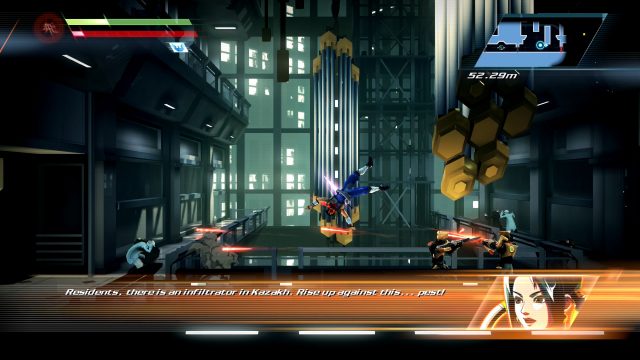
The fight seems at first to be merely a retread of Strider 2’s lethality and velocity, although zoomed out and a bit extra muted and anemic. To provide it correct credit score, by the point you attain the sport’s again half Hiryu’s fight vocabulary has expanded to incorporate an offensive air sprint, 4 swords (every with completely different perks), and different instruments like kunai and retooled variations of his arcade recreation Choices. Should you play on Regular issue, that’s about all you’ll be able to anticipate from Strider 2014’s fight – the convenience of taking part in Strider 2 for survival, with out concern for rank, and with additional instruments you by no means want to make use of.
On Onerous issue, although, whereas this by no means remotely approaches the issue of Strider, enemy formations and hearth patterns (and injury output) do begin to turn into participating and generally even genuinely threatening. The sequence of boss fights involving the Winds are a selected spotlight, as are some others within the again half. Nevertheless, the extent of success right here is generally simply that the sport stays participating, not that it’s a recreation with fight adequate to fireside up simply to get pleasure from that, as a result of the problem and enemy design is just not doing a lot to check the participant.
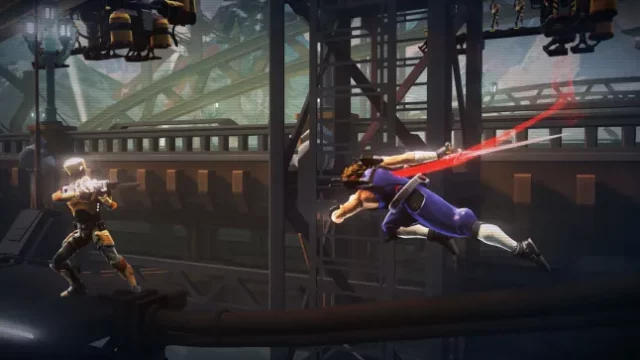
The extent design tends towards the instantly self-explanatory, which looks as if it could be good for the tempo however contributes to a sense of filler that plagues the entire runtime. Right here the try to mix the DNA of the NES and arcade titles falls quick. The arcade titles are every a decent, assorted megamix of setpieces, and the NES recreation is a bunch of bland corridors and boxy rooms. Sadly, Strider 2014 takes firmly after the NES recreation. There’s little or no enemy selection, loads of repeated room designs, and a really slender aesthetic vary. Strider 2014 is wealthy in coronary heart, however maybe poor in soul. The wow issue, the burning need to point out the participant one thing they’ve by no means seen earlier than, is simply not there.
As the sport is essentially too straightforward to play on Regular for anybody midway competent with 2D motion video games, right here’s a caveat for these taking part in the sport for his or her first time on Onerous. There’s a clear level of no return, and instantly after that time of no return, the issue spikes a number of instances over. I virtually admire the cruelty of the prank, as the sport doesn’t help you roll again your save or improve your energy in any approach after that time. Should you’re not cautious (or adequate) you could basically gentle lock your playthrough. So if you end up considering, “I’ve explored sufficient, absolutely that’s greater than sufficient energy collected to stomp the remainder of the sport,” perhaps suppose once more or prepare for a really large improve in problem. Personally I appreciated the rise in issue, and at last engaged with Hiryu’s complete toolkit. Arguably this final section is a excessive water mark for the sequence and a template for what good Strider fight might seem like going ahead… however it does really feel out of step with the previous 6 hours.
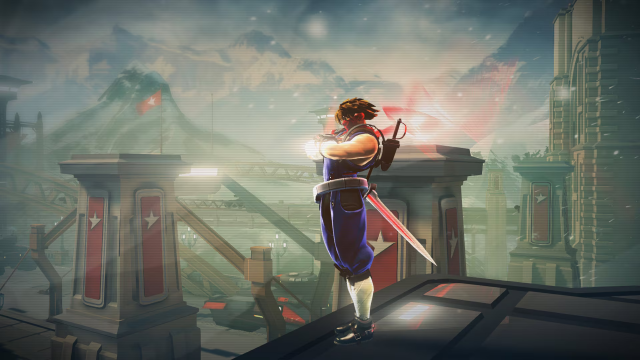
The story works in parts of each the NES and arcade titles, largely feeling extra according to Strider and Strider 2’s story, holding Grandmaster Meio because the chief antagonist, however it does comply with the manga and NES title in fleshing out the Striders a bit extra and foregrounding the concept Hiryu is the final hope of each the Striders and earth.
Whereas it in all probability wouldn’t examine effectively face to face if launched at present subsequent to the virtuoso pixel artwork of Ragebound or the splendid hand drawn look of Artwork of Vengeance, I can a minimum of hope that Capcom provides Strider 2014 (and Strider 2) a second life on trendy methods together with Swap 2. Out of the field, Strider 2014 doesn’t management almost in addition to Strider 2, because it makes the extraordinarily frequent 360-era mistake of insisting that or not it’s managed with the analog stick as a substitute of the d-pad. Because it stands, solely the PC model lets the participant remap the controls to make use of the d-pad as a substitute (due to instruments like Steam), however with a correct rerelease perhaps this most obtrusive situation with Strider 2014 could be fastened for a wider viewers. Whereas it provides up an excessive amount of of what makes the arcade video games particular in attempting to make a 6-to-8-hour, progression-focused expertise out of it, its coronary heart is in the correct place.
FURTHER READING
Please get pleasure from these different gaming historical past options:







